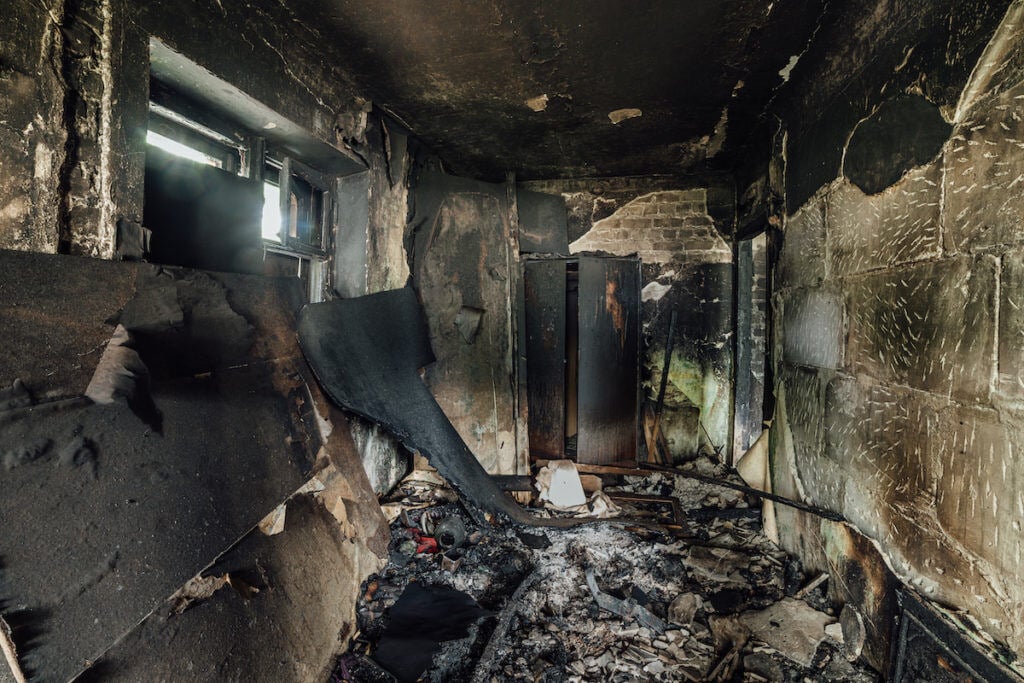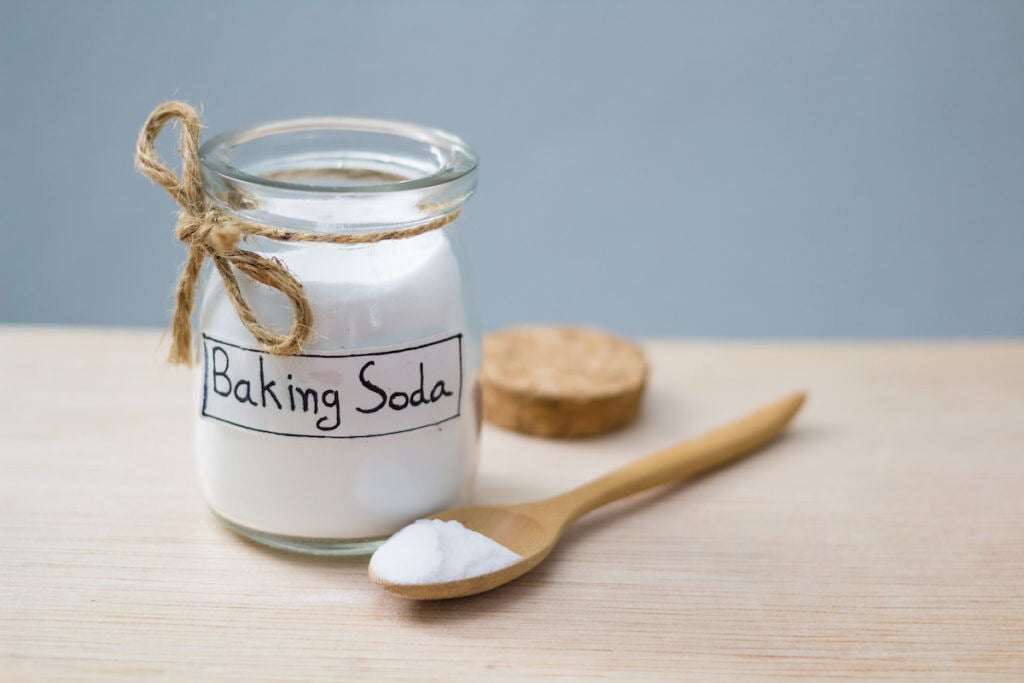After the flames are extinguished, there's a lot to do to clean the mess a fire leaves behind. Black soot is especially difficult. It is aesthetically unpleasant and poses potential hazards to humans and animals upon contact. This blog will address frequently asked questions about soot, equipping you with valuable knowledge on mitigating the risks associated with soot exposure.
What Is Black Soot?
Black soot, or carbon black, is a fine, powdery substance composed primarily of carbon particles. Black soot particles are microscopic, typically less than one micrometre, and can linger in the atmosphere for extended periods. These particles are black because they absorb and scatter light, resulting in a dark appearance.
How Does Black Soot Form?
Black soot is formed through the incomplete combustion of carbon-containing substances. When organic compounds like fossil fuels (coal, oil, and natural gas), wood, biomass, or even certain types of candles, burn, they undergo pyrolysis. Pyrolysis occurs when these materials are heated without sufficient oxygen for complete combustion.
During pyrolysis, complex organic molecules break into simpler compounds, including volatile gases and solid carbonaceous particles known as soot. Soot consists primarily of carbon but can also contain trace amounts of other elements like hydrogen, oxygen, nitrogen, and sulphur.

Incomplete combustion can occur for several reasons, such as inadequate air supply, low temperatures, or insufficient mixing of fuel and oxygen. In such conditions, the carbon-containing compounds do not have enough oxygen to react fully and produce carbon dioxide (CO2), the desired end product of complete combustion. Instead, they release carbon monoxide (CO) and carbon particles, which combine to form soot.
Candles and Soot
Burning candles can create a warm and cozy ambiance, casting a soft glow in any room. However, it's essential to be mindful of the potential for excessive soot production. Candles composed of unsaturated hydrocarbons, such as those derived from paraffin or vegetable oils, can emit more soot than those made from other materials. This soot consists of fine particles that can cling to walls, furniture, and other surfaces, leading to undesirable black stains.

To minimize the amount of soot produced by burning candles, choose candles made from alternative materials like beeswax or soy wax, which tend to emit less soot. Additionally, ensuring the wick is trimmed appropriately before lighting can help promote a cleaner burn. By taking these precautions, you can continue to enjoy the cozy atmosphere and soft glow of burning candles while reducing the impact of visible soot on your living space.
In some cases, black soot deposition (BSD), also known as "ghosting" and "dirty house syndrome," is an undesirable outcome resulting from the improper combustion of cheap candles. When left untreated, BSD can stain walls, ceilings, fabrics, and furniture, typically manifesting as dark spots or discoloration on carpets.
How Often Should Black Soot Be Cleaned?
The frequency of cleaning soot depends on several factors, such as the source of soot, the extent of buildup, and the type of surface or object affected. Here are some general guidelines for cleaning different areas:
- Fireplace or wood-burning stove. Soot buildup in these areas can be extensive. Be sure to clean the flue or chimney at least once a year or more frequently if you use the fireplace or stove often.
- Heating appliances. Follow the manufacturer's instructions regarding oil or gas furnaces maintenance and cleaning. Some systems may require annual professional care, while others need more frequent attention.
- Soot on walls, ceilings, and surfaces. If you notice soot on interior walls, ceilings, or other characters, clean it promptly to prevent it from spreading further. The frequency of cleaning will depend on the severity of the problem. Regular dusting and cleaning can minimize the buildup.
- Soot on household items. When soot accumulates on objects like furniture, electronics, or decorative items, clean them as needed. It's best to use appropriate cleaning methods and products suitable for each item to avoid damaging them.
- Soot from scented candles, cooking, and cooking equipment. Use candles or cook often? Clean the affected areas or equipment that produce soot promptly. Regular cleaning will prevent heavy buildup and make future cleaning easier.
Remember that these are general guidelines, and specific situations may require different cleaning schedules.
At-Home Soot Cleaning Tips
When cleaning soot, use the right products and procedures to avoid spreading the particles and causing more damage. For your convenience, here are some tips for at-home soot cleaning:
- Ventilate the area. Open windows and use fans for better ventilation before cleaning to avoid inhaling airborne soot particles.
- Wear protective gear. Use rubber gloves, safety goggles, and a dust mask or respirator to shield yourself from soot particles.
- Remove loose soot. Gently eliminate loose soot using a dry sponge or a vacuum cleaner with a brush attachment. Avoid rubbing or pressing the soot further into surfaces.
- Baking soda. Create a paste by mixing a tablespoon of baking soda with water. Apply the paste to soot stains, let it sit for a few minutes, and wipe it off with a damp cloth or sponge. Rinse the area and dry thoroughly.

- Dry cleaning sponges. Use dry cleaning sponges to attract and lift soot particles from various surfaces. Lightly rub the sponge over the affected area and clean it periodically.
- Vinegar solution. Mix equal parts vinegar and water in a spray bottle. Spray the solution onto the soot stains, gently scrub with a cloth or sponge, rinse, and dry thoroughly.
- Dishwashing detergent. Mix a few drops with warm water. Dip a cloth or sponge into the solution, gently scrub the soot-stained area, rinse, and dry thoroughly.
Remember to test any cleaning method on a small, inconspicuous area before applying it to a larger surface to ensure it doesn't cause any damage or discoloration. If the soot stains are extensive or difficult to remove, contacting a professional restoration company with experience dealing with soot and smoke damage may be best.
Call PuroClean for Professional Fire Damage Remediation Services
If you require prompt and expert fire damage restoration or smoke remediation services after a fire, contact PuroClean. As "The Paramedics of Property Damage®," we are the first responders for your urgent property damage restoration needs. Our services are accessible round the clock, every day of the week. To schedule an appointment with your local PuroClean office, visit our website or call (877) 261-7876.
